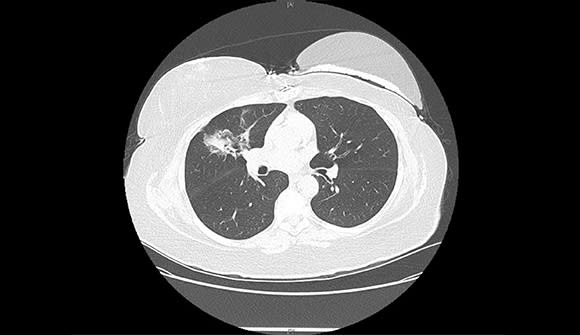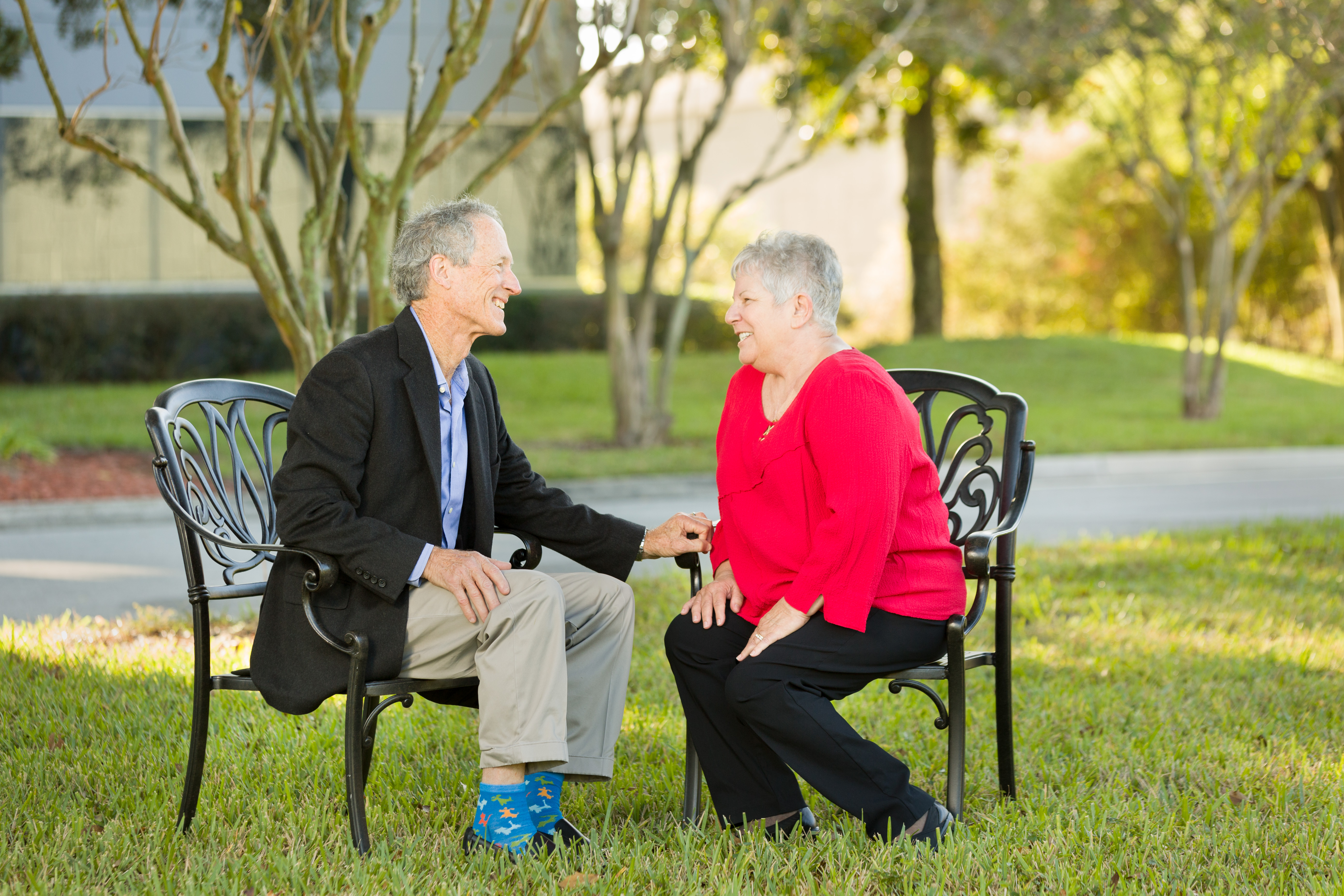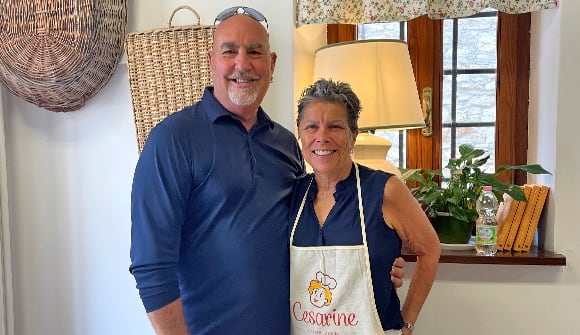Smoker avoided thoughts of the Big C
Then, a family doctor and a new lung cancer screening saved her life.
Article Date:

There were no symptoms. Just a persistent cough that could have been caused by sinus drainage. But Pamela Francis was 68, and she had smoked since she was a teenager. Her family doctor of 30 years knew she was a good candidate for a new lung scan that could detect early-stage cancer.
James Clower, MD, who today is chief medical officer for Baptist Primary Care, told Francis in 2016 during her annual checkup, “Pam, your insurance will pay for the test, and I think you need to have it.” She put it off, and he called to remind her.
When she finally got it, it saved her life.
Doctors found a stage 1B tumor between the middle and upper lobes of her right lung. She underwent surgery to remove it with Bill Putnam, MD, thoracic surgeon and Medical Director at Baptist MD Anderson Cancer Center, and four cycles of chemotherapy followed.
No longer a smoker, Francis is now cancer-free.
Who should get screened?
The United States Preventive Services Task Force began recommending in 2013 that certain people at high risk for lung cancer have yearly screening with low-dose CT scans. But smokers have been reluctant. Less than 5.9 percent of people who are eligible for the screening get it, according to research presented at this year’s American Society of Clinical Oncology meeting.
“There is a stigma associated with smoking that makes people avoid this,” said Carolyn Baggett, RN, the lung cancer screening program coordinator at Baptist MD Anderson Cancer Center. “People feel like they’ve done it to themselves.”
The truth is, smoking is an addiction and no one deserves lung cancer, Baggett said.
“They deserve compassion, and we are here to offer support,” she said.
A smoker’s nagging guilt
Francis began smoking in the 1960s, back when nearly everybody smoked.
“I worked in a hospital in the admitting office. In those days, you could smoke at a hospital,” she said. “You could actually smoke at your desk. It wasn’t unusual.”
One time, she quit. But it didn’t stick.
“I knew I should stop, but I didn’t dwell on it,” she said.
She did feel guilty, though, when she worked with patients and told them not to smoke. And, there was one person in her life who continued to pester her about her smoking.
Dr. Clower was Francis’s family physician, but he was also her boss and her friend. He was bothered by his nurse’s one smoking. “In spite of all my nagging for her to quit, it never worked for her,” he said. “It’s a drug-delivery system for nicotine and is very addictive.”

Francis said with a laugh “He didn’t harp on it. But when he had an opportunity, there would be this little dig.”
When Dr. Clower suggested Francis get the lung scan, she was reluctant. But then, she got it done. She received a phone call within hours. The result was positive.
“It’s like you’re in disbelief,” Francis said. “I knew it wasn’t going to be good.”
Screening, a game changer for survival
Because her tumor was detected early, though, the news wasn’t as bad as it could have been. Her successful treatment and survival has made her a lung screening fan, and she now recommends the test to others with long histories of smoking.
Baggett wishes more people would get the scan. By the time symptoms appear, lung cancer has typically advanced to stage 4. It’s a heartbreaking moment for patients and loved ones. The conversations turn to keeping the patient alive long enough to share a few more family milestones.
The five-year survival rate for stage 4 lung cancer is 5 percent. But if the cancer is discovered early, while it’s still localized in the lungs, the survival rate increases to 70 percent.
Baggett said the vast majority of patients she saw during her years as a lung cancer nurse navigator typically had stage 4 cancers. It was very rare to see a patient at stage 1.
Today, she’s seeing something different. In 2015 Baggett led the launch of Baptist MD Anderson Cancer Center’s new low-dose CT scan program. Since then, 70 percent of lung cancers discovered through the program have been stage 1 or 2.
“It excites me to see we’re finding so many at an early stage,” she said. “It means this is working and more people will survive lung cancer.”
The lung cancer team that is a critical part of this effort includes Dr. Putnam; Subrato Deb, MD, thoracic surgeon; Aakash Modi, MD, interventional pulmonologist; John Vu, MD, medical oncologist; Michael Olson, MD, radiation oncologist; as well as Carolyn Baggett, RN and Isis Leonard, RN.
Low-dose CT scans are recommended for adults aged 55 to 77 years who have a “30 pack-year” smoking history and who currently smoke or have quit within the past 15 years. Thirty pack-years means a person has smoked a pack a day for 30 years, or two packs a day for 15 years.
To find out if you are eligible to be tested, contact your primary care physician or visit baptistjax.com/lungscreening.



